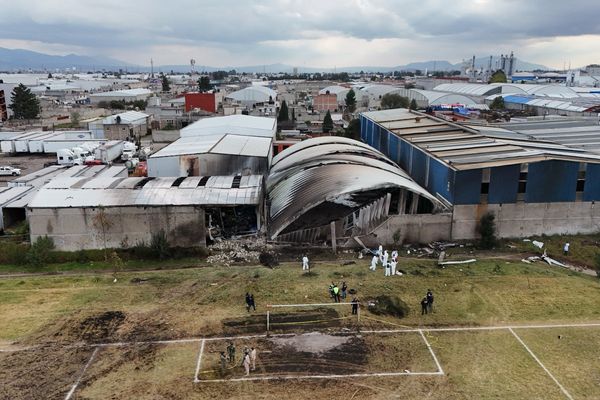
A century ago the wrecking ball demolished the halls, courtyards, arches and domes of one of London’s best-loved buildings in what the architectural historian Nikolaus Pevsner would decry as “the greatest architectural crime” to befall the capital in the 20th century.
The Old Lady of Threadneedle Street (as the Bank of England was nicknamed after a satirical 1797 cartoon of William Pitt the Younger, prime minister from 1783 to 1801, wooing an old lady dressed in pound notes) has been the heart of the City since 1734.
Refashioned and expanded over the decades, after the 1780 Gordon riots, when rioters scaled the neighbouring church of St Christopher le Stocks to throw projectiles at the Bank, the church was demolished to allow the Bank’s expansion westwards along Threadneedle Street.
In 1788 the Bank appointed Sir John Soane as architect and surveyor. His redesign, which he continued until 1833, resulted in arguably his greatest work, “the pride and boast” of his life. And so it remained, a beloved neo-classical masterpiece, until the 1920s.
Today, little exists of Soane’s much-loved building; the only part still in situ is the immense curtain wall that curves around the building. But a new exhibition, Building the Bank – 100 Years On, at the Bank of England Museum, offers a window into the lost architectural splendours as the post-world war one Bank outgrew its buildings, and its rebirth as the equally impressive replacement by Sir Herbert Baker began to spring up in its place 100 years ago.
Unpublished black-and-white images by the architectural photographer Francis Yerbury (1885-1970) show workers amid the rubble and exposed bricks, a decorative caryatid statue dangling beneath a great glass dome and the Bank’s new steel frame emerging above the city streets.
Baker, with experience in South Africa and India, was chosen to create a building radiating “strength, permanence and reliability”, a centre of the British empire in London in the 1920s. The building was finished in Portland stone, reaching seven floors above ground and three below, and was completed on the eve of the second world war.
Baker strove to recreate much of the classical symbolism and flourishes of Soane and his predecessor the architect Robert Taylor.
Jennifer Adam, the curator of the Bank of England Museum, said: “Despite the controversy surrounding the pulling down of Sir John Soane’s building, Baker’s Bank remains an effective and architecturally significant landmark in London. Baker hugely admired Soane’s work and much of the classical symbolism nods to the work of Baker’s predecessors.”
Baker’s Bank, as it remains today, features the work of many artists and craftspeople. Stunning 1930s mosaics by the Russian artist Boris Anrep decorate the ground floor and are reproduced for the exhibition. A series of mural paintings records the Bank around the time of its demolition. Sculptures by Charles Wheeler, later president of the Royal Academy, are everywhere and were the biggest sculpture commission of the period.
Visitors to the free exhibition at the museum, housed in the same building as the Bank, can enjoy the entrance lobby, which is a replica of Taylor’s 18th-century Bartholomew Lane entrance. The museum also features a reproduction of Soane’s Stock Office from 1792. The lobby of the museum rotunda, which will house part of the exhibition, is a direct copy of a space designed by Soane.
The exhibition, which runs from 16 September until spring 2027, will also display Roman archaeological discoveries made on the site a century ago, including oil lamps, combs and vases.
Surviving elements of Soane’s building include the original conical bricks he developed for the Bank’s rotunda, a model of the Temple of Vesta at Tivoli in Italy, which inspired his design of the Bank’s Tivoli Corner. Baker’s hand-drawn designs and sketches, including 1930s suggestions for new British coins, along with proposals for sculpture and mosaics, will also be on display.
“The sculptures and mosaic are magnificent public artworks, designed to communicate the Bank’s role and purpose. We’re excited to share them through this exhibition and celebrate the architecture and design heritage here at the Bank of England,” said Adam.
• Building the Bank – 100 Years On is at the Bank of England Museum, London, from 16 September







